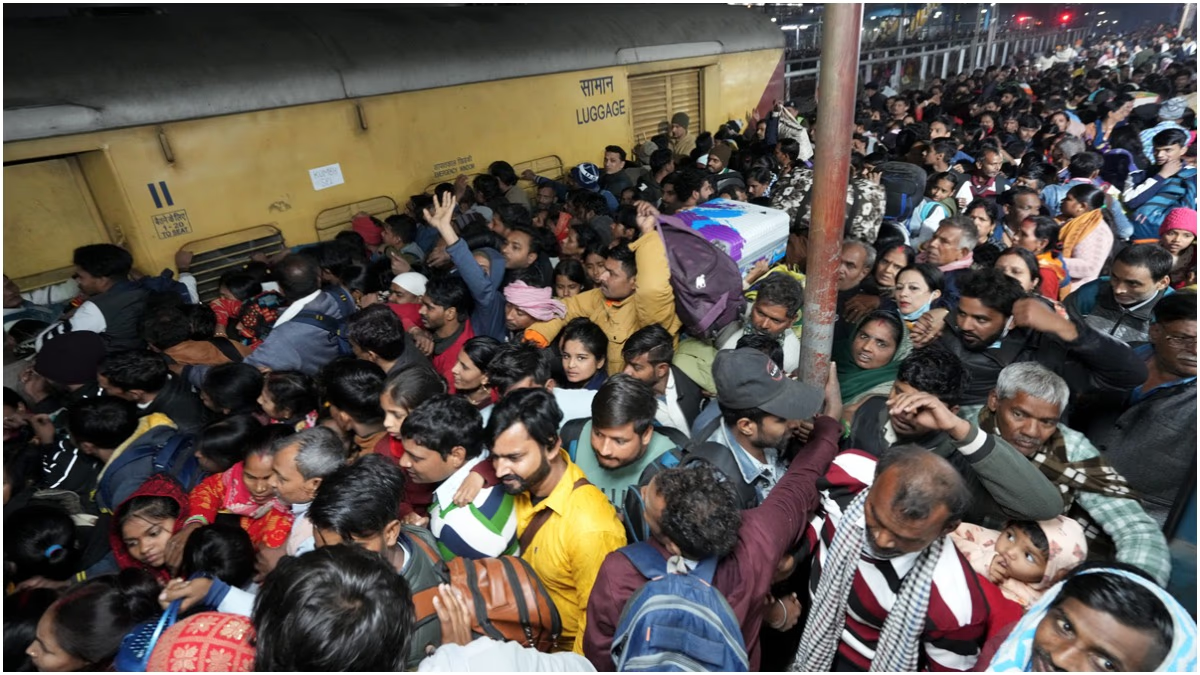On Saturday night, a tragic incident at New Delhi Railway Station resulted in the death of at least 18 individuals, with numerous others injured. The injured were taken for treatment to Lok Nayak Jai Prakash Narayan Hospital and Lady Hardinge Medical College. Victims included nine women, four men, and five children. Crowds assembling for the Prayagraj Mahakumbh began to swell from the evening, yet crowd management measures were not implemented in time by the authorities.
Eyewitness accounts to Aaj Tak mentioned immense crowds on all platforms, but the situation was notably worse on platforms 12, 13, 14, and 15. The chaos reportedly erupted due to recurrent platform change announcements for train arrivals. Deputy Commissioner of Police (DCP) Railways, K.P.S. Malhotra stated that the Prayagraj Express was stationed at platform 14, attracting a massive crowd. Other delayed trains, such as the Swatantrata Sainani Express and Bhubaneswar Rajdhani, had passengers gathering on platforms 12, 13, and 14 as well.
Tragedy at NDLS: Who is to Blame?
Over 1500 General Tickets Sold Hourly
DCP Malhotra indicated, 'We anticipated crowds, but the situation escalated within moments. The railways will investigate the incident, and questioning of responsible staff and officials will follow to uncover the exact cause. Reports state that every hour, 1500 general tickets were sold at New Delhi station, contributing to the uncontrolled crowd surge. A flashpoint occurred near the escalators of platforms 14 and 16.' The Indian Railways initially dismissed rumors of a stampede, labeling the situation as 'stampede-like,' but later confirmed unknown numbers of injuries, with victims transported to hospitals. LNJP Hospital confirmed the fatalities.
Eyewitness Accounts:
A Sergeant from the Indian Air Force (IAF) and a direct witness of the event, Ajit, remarked, 'The joint office of India's three military branches is located at the station. I couldn't reach there due to the crowding. Despite efforts to warn people and prevent accidents, many did not heed. With a friend's help, I assisted those injured.'
Crowd Surges Started on Stairs, Not Platforms
An eyewitness who lost his mother in the tragedy recounted that the stampede began on the stairs leading down to the platforms, not on the platforms themselves. 'My family was headed to Chhapra, descending the stairs. The platform appeared normal. Suddenly, a rush ensued on the stairs, and many, including my mother, were caught underfoot as others surged past,' he narrated. Other eyewitnesses also noted that many visitors, lacking tickets, had gathered, hoping to board trains heading to the Prayagraj Mahakumbh.
Unauthorized Access: A Critical Issue
Many complained about confirmed ticket holders being unable to board trains due to crowds of general or ticket-less individuals blocking train entrances. Amidst the crowd, luggage thefts occurred, and there was scarce space even in AC coaches. Confirmed ticket holders, squeezed out by overcrowding, disembarked due to suffocation risks. In response, the railways operated special trains from 12:30 AM. Many without tickets entered the platforms, intending to purchase them, but availability was limited.
Railway Mismanagement Underlines the Crisis
A woman, who secured a seat on a special train without a ticket, had planned to purchase her ticket from the TTE when approached. As with many others, she blamed the crowd for being unable to buy tickets earlier, stating access controls were virtually non-existent. Many boarded trains hoping to buy tickets later, entering the station without them as there were no checks at entry points. This illustrates how administrative lapses contributed significantly to the mayhem at New Delhi station.




